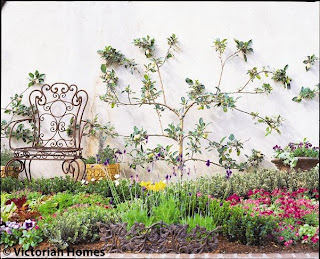Fresh and fluffy homemade Buttermilk Biscuits are a great way to start the day.
On-the-go Buttermilk Biscuits are hot, fluffy and ready to eat when you’re running out the door. Eat them warm from the oven with butter and honey or jam, or stack scrambled eggs, sausage patties or bacon in between for an on-the-go breakfast sandwich.
 Buttermilk Biscuits
Buttermilk Biscuits
Serves 10
Prep time: 20 minutes • Cook time: 12 minutes
2 cups unbleached all-purpose flour
¼ teaspoon baking soda
1 Tablespoon baking powder
1 teaspoon kosher salt
6 Tablespoons butter, cold and cubed into smaller pieces
1 cup buttermilk or buttermilk substitute (recipe follows)
1 Tablespoon butter, melted
Flour for dusting
1. Preheat oven to 450°F.
2. In a medium bowl and using a wooden spoon, combine all dry ingredients.
3. Add butter cubes to the dry ingredients. Using a pastry blender or fork, combine butter into the dry ingredients, without over-blending, until it resembles coarse meal.
4. Add the buttermilk slowly then stir until the mixture is just combined. It will still be a bit dry, but should hold together when pressed.
5. Dump dough mixture out onto a lightly floured board. Using your hands, gently pat the dough until it is approximately ½-inch thick. Do not over-handle the dough and do not use a rolling pin; simply flatten the disc out with your hands.
6. Starting at the very edge, cut dough into circles using a round cutter.
7. Place on an ungreased cookie sheet with the sides of each biscuit touching one another.
8. Bake for 10-12 minutes or until slightly brown on the top.
9. Remove from the oven, brush with the 1 tablespoon of melted butter and serve warm.
Buttermilk Substitute
Most people don’t keep buttermilk on hand but a substitute is easy to make. Combine 1 Tablespoon lemon juice or white vinegar for each cup of nonfat or 2% milk. Allow mixture to sit for 10 minutes or until you notice the milk curdling. Stir together and use as a substitute for buttermilk in any recipe.
Source: Buttermilk Biscuits Recipe
On-the-go Buttermilk Biscuits are hot, fluffy and ready to eat when you’re running out the door. Eat them warm from the oven with butter and honey or jam, or stack scrambled eggs, sausage patties or bacon in between for an on-the-go breakfast sandwich.
 Buttermilk Biscuits
Buttermilk BiscuitsServes 10
Prep time: 20 minutes • Cook time: 12 minutes
2 cups unbleached all-purpose flour
¼ teaspoon baking soda
1 Tablespoon baking powder
1 teaspoon kosher salt
6 Tablespoons butter, cold and cubed into smaller pieces
1 cup buttermilk or buttermilk substitute (recipe follows)
1 Tablespoon butter, melted
Flour for dusting
1. Preheat oven to 450°F.
2. In a medium bowl and using a wooden spoon, combine all dry ingredients.
3. Add butter cubes to the dry ingredients. Using a pastry blender or fork, combine butter into the dry ingredients, without over-blending, until it resembles coarse meal.
4. Add the buttermilk slowly then stir until the mixture is just combined. It will still be a bit dry, but should hold together when pressed.
5. Dump dough mixture out onto a lightly floured board. Using your hands, gently pat the dough until it is approximately ½-inch thick. Do not over-handle the dough and do not use a rolling pin; simply flatten the disc out with your hands.
6. Starting at the very edge, cut dough into circles using a round cutter.
7. Place on an ungreased cookie sheet with the sides of each biscuit touching one another.
8. Bake for 10-12 minutes or until slightly brown on the top.
9. Remove from the oven, brush with the 1 tablespoon of melted butter and serve warm.
Buttermilk Substitute
Most people don’t keep buttermilk on hand but a substitute is easy to make. Combine 1 Tablespoon lemon juice or white vinegar for each cup of nonfat or 2% milk. Allow mixture to sit for 10 minutes or until you notice the milk curdling. Stir together and use as a substitute for buttermilk in any recipe.
Source: Buttermilk Biscuits Recipe
















































